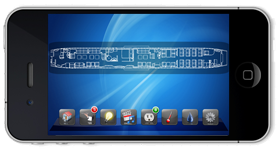A successful aircraft paint job begins with the surface preparation. A new aircraft from the OEM needs only to be lightly sanded and cleaned prior to receiving the primer-filler coat. Some rivets may need to slightly shaved if they don’t properly sit flush to the skin. Temporary seals need to be cut out and removed while others need to be covered with tape. The quality of skin work varies and can be flushed with body fill, however over time this putty can crack loose so use it very sparingly or none at all.
Repainting an existing aircraft first shall require the stripping of the old paint. This will first be dictated on the shop’s location and its use of chemical strippers. The Environmental Protection Agency (EPA) in the US has regulated the use of toxic strippers that contain methylene chloride. Older facilities can still use these strippers but must contain the waste in drums and have it removed by collection systems. Newer facilities or some that has changed for environmental concern, now use synthetic polymer beads and high pressure air systems that simply blast away the old paint without penetrating the aluminum skin. This technique is similar to sand blasting where a pressurized gun blows beads against the airframe at about 40 PSI. The beads, dust and paint is removed in a prep-area and then the surface is lightly sanded as required and cleaned for priming and painting.
The use of bead blasting also has its advantages where chemical etchants can get between aluminum panels and rivets where the OEM has sealed theses seems where Alodine was used to prevent corrosion. Strippers can also affect the coatings and anodized finishes of fasteners and rivets. It would be a good idea to consult with the OEM by speaking to your local in-field, service representative before you strip you aircraft.
Once the paint has been removed, inspect the surface carefully to be sure all of the old paint has been removed and that there is no residue, oils or hydrologic fluids on the skin surface. Also dust or dirt needs to be wiped off as any of these contaminants under the primed or final paint finish will affect the longevity and durability of the final painted surface. All of the foil and paper protection from the stripping process now needs to be removed and replaced with new protection to begin the paint process staring with the primer coat.









